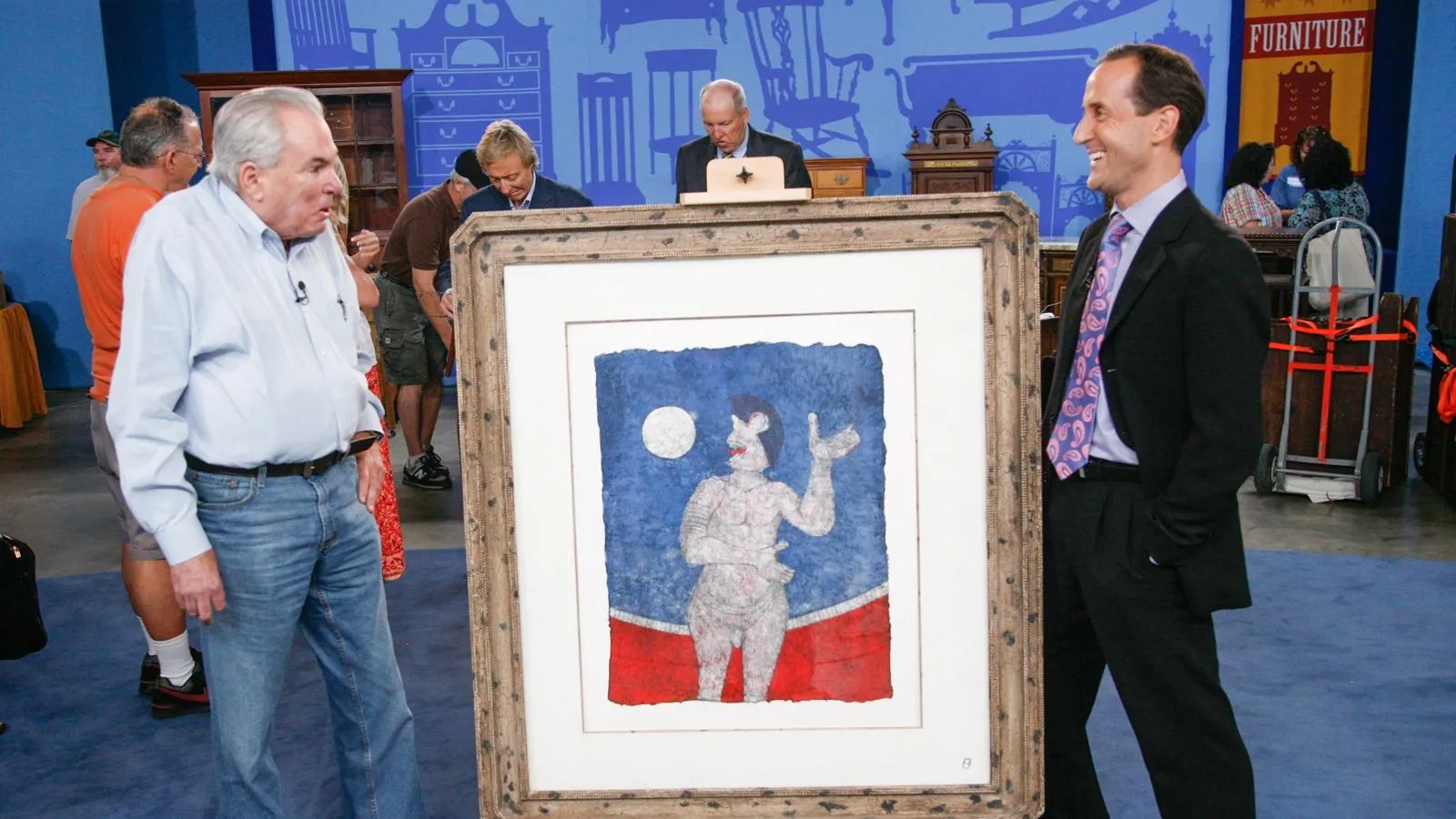APPRAISER: I love stoneware. You know, my twin brother and I collected it when we were 12 years old.
GUEST: Awesome.
APPRAISER: So anytime I see salt-glazed stoneware, I get excited. But, but these have a special history. What's the family part of it?
GUEST: Years ago, Albert Gallatin, which was the secretary of the Treasury...
APPRAISER: Yes.
GUEST: ...at the time, uh, met these Germans.
APPRAISER: Was it the, in the early 19th century?
GUEST: Yes.
APPRAISER: Yeah, okay, yeah.
GUEST: And my great-great- grandfather was Adolf Eberhardt.
APPRAISER: Uh, yes.
GUEST: And he was one of the Germans there. They founded the New Geneva Crock Factory. And the reason it was called New Geneva was because Albert Gallatin was from Geneva, Switzerland.
APPRAISER: Yes.
GUEST: He named the town, and he subsidized them, and they named the pottery New Geneva.
APPRAISER: New Geneva. In this area, Western Pennsylvania, they hadn't really found any clay.
GUEST: Yes.
APPRAISER: Most of the great white clay was found up in the north coast, South Amboy in New Jersey. So they hadn't found a clay source. And then, in the early 19th century, all of a sudden, down in the river, near New Geneva, they found this incredible clay source.
GUEST: Yes.
APPRAISER: So this became a real center for, for stoneware production.
GUEST: Yes, it did.
APPRAISER: And there were many potters that worked, right?
GUEST: Yes, there were.
APPRAISER: There was the glass factory, right?
GUEST: The glass factory, also.
APPRAISER: And didn't they also start using some of the glass factories to make pottery, as well?
GUEST: Yes.
APPRAISER: On the front, you see the 12. It's a salt-glazed stoneware jar, 12-gallon. They made them, believe it or not, in New Geneva as big as 30 and 40 gallons.
GUEST: This is the largest one I've ever seen.
APPRAISER: And these were turned on a wheel. Can you imagine turning something like this on a wheel? And decorated it in blue. They put the, the stoneware in the kiln. They shoveled salt in there when it hit about 2,200 degrees. And that salt vitrified and it coated the piece. Do you see this orange peel effect?
GUEST: Yes.
APPRAISER: That's the salt glaze that's covering the piece. And that made this piece impermeable to all sorts of things: acids, turpentine. This stuff was strong stuff. But before they fired it in the kiln, they often decorated it, and in the 1870s, they started using stencils to wrap it around, apply the cobalt blue. It's something that has a great appeal, okay?
GUEST: Yes.
APPRAISER: It's really neat that you have these two other pieces. This little piece, which was made probably across the river, probably in the 1870s or '80s, this was a really popular, in Greensboro and in New Geneva...
GUEST: Uh-huh.
APPRAISER: They were really popular, a little brushed-on, hand-done effect. This little jar... Hamilton and Jones, Greensboro, Pennsylvania.
GUEST: Yes.
APPRAISER: Very close by, across the river. They're using the same clay source. The wonderful thing here is that you brought in this image of the pottery. You have Hamilton Robbins Pottery, right in New Geneva. So here they are working.
GUEST: Yes.
APPRAISER: And they could make upwards of, like, 200, 300 pots a day. It's ironic that there was glass made there and there was pottery made in the same area, because you know what put the potters out of business?
GUEST: The glass.
APPRAISER: You got it. For insurance purposes, these would be valued at upwards of $5,000, as a wonderful group that, uh, has stayed in your family. Okay?
GUEST: Oh, dear.
APPRAISER: So it's nice to know that.
GUEST: Yes.
APPRAISER: Now, if this stencil had an eagle here, this would probably be about $8,000 or $9,000.
GUEST: Really?
APPRAISER: If it had a free-hand decoration, it would probably be $20,000-plus.











